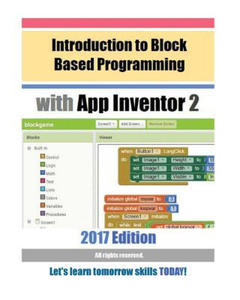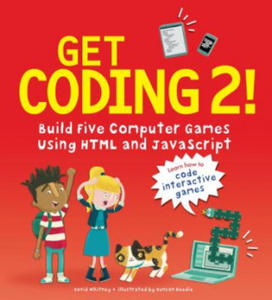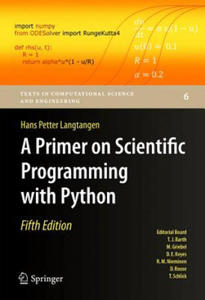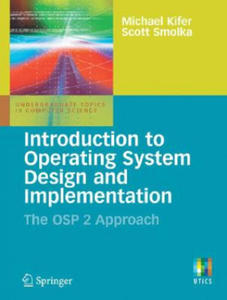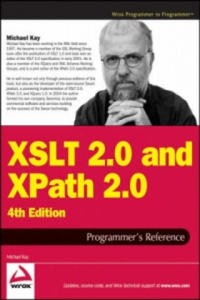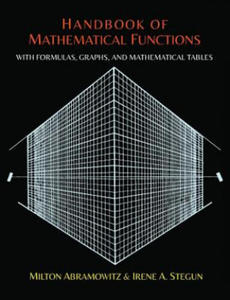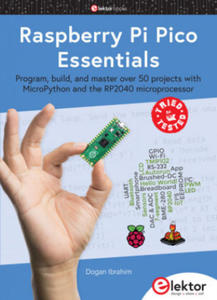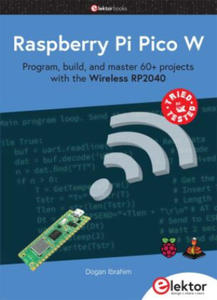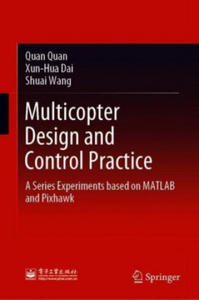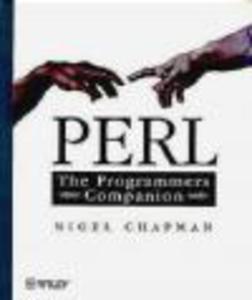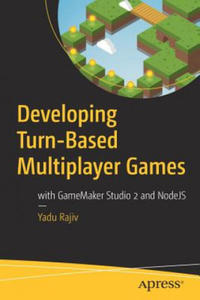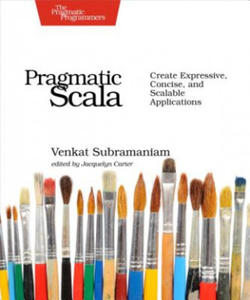gigant an introduction to programming using alice 2 2 pnfhdqfnplgeeblcystj
- znaleziono 17 produktów w 3 sklepach
Spalona Żywcem Wyd. Kieszonkowe - Souad
Książki & Multimedia > Książki
Opis - Pierwsze na świecie świadectwo ofiary zbrodni honorowej. Miała siedemnaście lat i zakochała się: zhańbiła rodzinę. Więc rodzina wydała na nią wyrok śmierci... Pokochała go pierwszą miłością. Myślała, że się z nią ożeni. Ale ukochany zniknął, a ona odkryła, że jest w ciąży. A w jej świecie to najcięższa zbrodnia... W zapomnianej przez Boga wiosce w Cisjordanii kobiety są warte mniej niż zwierzęta domowe. Tu mężczyzna jest panem życia i śmierci żony, córki, siostry. Brat może bezkarnie zabić siostrę, matka - córkę, kolejną bezużyteczną dziewczynkę, jaka się urodzi. Tu kobiecie odbiera się godność, a nawet życie zgodnie z odwiecznym obyczajem i uświęconą tradycją. A śmierć jest karą dla dziewczyny, która zhańbi rodzinę. Tak jak Souad. Wyrok wydaje jej ojciec. Szwagier dokonuje egzekucji. Oblewa Souad benzyną i podpala... SOUAD przeżyła - cudem, ale rodzina usiłowała zabić ją nawet w szpitalu. Na zawsze jednak pozostanie straszliwie okaleczona - na ciele i duszy. I wciąż musi się ukrywać; dopóki żyje, jej rodzinę okrywa hańba. Spalona żywcem, opublikowana pod pseudonimem szokująca opowieść o piekle, jakim było jej dzieciństwo i młodość, stała się międzynarodowym bestsellerem. Wydana w 37 w krajach książka przerywa tabu milczenia wobec istniejącej nadal w krajach muzułmańskich barbarzyńskiej tradycji. Nieludzkiego obyczaju, prawa mężczyzn, na mocy którego co najmniej pięć tysięcy kobiet pada co roku ofiarą zbrodni honorowej. Nazwa - Spalona Żywcem Wyd. Kieszonkowe Autor - Souad Oprawa - Miękka Wydawca - Amber Kod ISBN - 9788324159406 Kod EAN - 9788324159406 Wydanie - 1 Rok wydania - 2016 Tłumacz - 31182,maria rostworowska; Format - 110 x 175 x 14 Ilość stron - 224 Podatek VAT - 5% Premiera - 2016-06-23
Sklep: InBook.pl
Introduction to Block Based Programming with App Inventor 2: 2017 Edition Createspace Independent Publishing Platform
Książki / Literatura obcojęzyczna
Give yourself a strong head start in computer programming with our TomorrowSKILLS books, which are published fresh in 2017. Through these books you will learn how programming works and how simple programs may be created using ready-made resources and moder
Sklep: Libristo.pl
Get Coding 2! Build Five Computer Games Using HTML and JavaScript CANDLEWICK BOOKS
Książki / Literatura obcojęzyczna
Ready to learn how to code a game? Get an introduction to programming with this fun and accessible guide. Learn HTML and JavaScript. Design and build five interactive computer games. Create cool graphics. Code simple artificial intelligence. Th
Sklep: Libristo.pl
Primer on Scientific Programming with Python Springer-Verlag Berlin and Heidelberg GmbH & Co....
Książki / Literatura obcojęzyczna
The book serves as a first introduction to computer programming of scientific applications, using the high-level Python language. The exposition is example and problem-oriented, where the applications are taken from mathematics, numerical calculus, statistics, physics, biology and finance. The book teaches "Matlab-style" and procedural programming as well as object-oriented programming. High school mathematics is a required background and it is advantageous to study classical and numerical one-variable calculus in parallel with reading this book. Besides learning how to program computers, the reader will also learn how to solve mathematical problems, arising in various branches of science and engineering, with the aid of numerical methods and programming. By blending programming, mathematics and scientific applications, the book lays a solid foundation for practicing computational science.§§From the reviews: Langtangen ... does an excellent job of introducing programming as a set of skills in problem solving. He guides the reader into thinking properly about producing program logic and data structures for modeling real-world problems using objects and functions and embracing the object-oriented paradigm. ... Summing Up: Highly recommended. §§F. H. Wild III, Choice, Vol. 47 (8), April 2010§§Those of us who have learned scientific programming in Python 'on the streets' could be a little jealous of students who have the opportunity to take a course out of Langtangen's Primer."§ John D. Cook, The Mathematical Association of America, September 2011§§This book goes through Python in particular, and programming in general, via tasks that scientists will likely perform. It contains valuable information for students new to scientific computing and would be the perfect bridge between an introduction to programming and an advanced course on numerical methods or computational science.§ Alex Small, IEEE, CiSE Vol. 14 (2), March _ /April 2012 §§"This fourth edition is a§wonderful, inclusive textbook that covers pretty much everything one needs to§know to go from zero to fairly sophisticated scientific programming in Python..."§Joan Horvath, Computing Reviews, March§2015 §§
Sklep: Libristo.pl
Introduction to Operating System Design and Implementation Springer London Ltd
Książki / Literatura obcojęzyczna
OSP 2 is both an implementation of a modern operating system and a flexible environment for generating implementation projects appropriate for an introductory course in operating system design. This book is an introduction to the design and implementation of operating systems using OSP 2, the next generation of the highly popular OSP courseware for undergraduate operating system courses. §Topics and Features: Process and thread management; Memory, Resource and I/0 device management; Interprocess communication; Gives opportunity to practice these skills in a realistic operating systems programming environment.§This book contains enough projects for up to 3 semesters, exposing students to many essential features of operating systems, while at the same time isolating them from low-level machine-dependent concerns. Thus, even in 1 semester, students can learn about page-replacement strategies in virtual memory management, CPU-scheduling strategies, disk seek-time optimization & other issues in operating system design.
Sklep: Libristo.pl
XSLT 2.0 and XPath 2.0 Programmer's Reference 4e John Wiley & Sons Inc
Książki / Literatura obcojęzyczna
This book is primarily a practical reference book for professional XSLT developers. It assumes no previous knowledge of the language, and many developers have used it as their first introduction to XSLT; however, it is not structured as a tutorial, and there are other books on XSLT that provide a gentler approach for beginners. The book does assume a basic knowledge of XML, HTML, and the architecture of the Web, and it is written for experienced programmers. There's no assumption that you know any particular language such as Java or Visual Basic, just that you recognize the concepts that all programming languages have in common. The book is suitable both for XSLT 1.0 users upgrading to XSLT 2.0, and for newcomers to XSLT. The book is also equally suitable whether you work in the Java or .NET world. As befits a reference book, a key aim is that the coverage should be comprehensive and authoritative. It is designed to give you all the details, not just an overview of the 20 percent of the language that most people use 80 percent of the time.It's designed so that you will keep coming back to the book whenever you encounter new and challenging programming tasks, not as a book that you skim quickly and then leave on the shelf. If you like detail, you will enjoy this book; if not, you probably won't. But as well as giving the detail, this book aims to explain the concepts, in some depth. It's therefore a book for people who not only want to use the language but who also want to understand it at a deep level. The book aims to tell you everything you need to know about the XSLT 2.0 language. It gives equal weight to the things that are new in XSLT 2.0 and the things that were already present in version 1.0. The book is about the language, not about specific products. However, there are appendices about Saxon (the author's own implementation of XSLT 2.0), about the Altova XSLT 2.0 implementation, and about the Java and Microsoft APIs for controlling XSLT transformations, which will no doubt be upgraded to handle XSLT 2.0 as well as 1.0. A third XSLT 2.0 processor, Gestalt, was released shortly before the book went to press, too late to describe it in any detail. But the experience of XSLT 1.0 is that there has been a very high level of interoperability between different XSLT processors, and if you can use one of them, then you can use them all.In the previous edition we split XSLT 2.0 and XPath 2.0 into separate volumes. The idea was that some readers might be interested in XPath alone. However, many bought the XSLT 2.0 book without its XPath companion and were left confused as a result; so this time, the material is back together. The XPath reference information is in self-contained chapters, so it should still be accessible when you use XPath in contexts other than XSLT. The book does not cover XSL Formatting Objects, a big subject in its own right. Nor does it cover XML Schemas in any detail. If you want to use these important technologies in conjunction with XSLT, there are other books that do them justice. This book contains twenty chapters and eight appendixes (the last of which is a glossary) organized into four parts. The following section outlines what you can find in each part, chapter, and appendix. Part I: Foundations: The first part of the book covers essential concepts. You should read these before you start coding.If you ignore this advice, as most people do, then you read them when you get to that trough of despair when you find it impossible to make the language do anything but the most trivial tasks. XSLT is different from other languages, and to make it work for you, you need to understand how it was designed to be used. Chapter 1: XSLT in Context: This chapter explains how XSLT fits into the big picture: how the language came into being and how it sits alongside other technologies. It also has a few simple coding examples to keep you alert. Chapter 2: The XSLT Processing Model: This is about the architecture of an XSLT processor: the inputs, the outputs, and the data model. Understanding the data model is perhaps the most important thing that distinguishes an XSLT expert from an amateur; it may seem like information that you can't use immediately, but it's knowledge that will stop you making a lot of stupid mistakes. Chapter 3: Stylesheet Structure: XSLT development is about writing stylesheets, and this chapter takes a bird's eye view of what stylesheets look like.It explains the key concepts of rule-based programming using templates, and explains how to undertake programming-in-the-large by structuring your application using modules and pipelines. Chapter 4: Stylesheets and Schemas: A key innovation in XSLT 2.0 is that stylesheets can take advantage of knowledge about the structure of your input and output documents, provided in the form of an XML Schema. This chapter provides a quick overview of XML Schema to describe its impact on XSLT development. Not everyone uses schemas, and you can skip this chapter if you fall into that category. Chapter 5: The Type System: XPath 2.0 and XSLT 2.0 offer strong typing as an alternative to the weak typing approach of the 1.0 languages. This means that you can declare the types of your variables, functions, and parameters, and use this information to get early warning of programming errors. This chapter explains the data types available and the mechanisms for creating user-defined types. Part II: XSLT and XPath Reference: This section of the book contains reference material, organized in the hope that you can easily find what you need when you need it.It's not designed for sequential reading, though you might well want to leaf through the pages to discover what's there. Chapter 6: XSLT Elements: This monster chapter lists all the XSLT elements you can use in a stylesheet, in alphabetical order, giving detailed rules for the syntax and semantics of each element, advice on usage, and examples. This is probably the part of the book you will use most frequently as you become an expert XSLT user. It's a "no stone unturned" approach, based on the belief that as a professional developer you need to know what happens when the going gets tough, not just when the wind is in your direction. Chapter 7: XPath Fundamentals: This chapter explains the basics of XPath: the low-level constructs such as literals, variables, and function calls. It also explains the context rules, which describe how the evaluation of XPath expressions depends on the XSLT processing context in which they appear. Chapter 8: XPath: Operators on Items: XPath offers the usual range of operators for performing arithmetic, boolean comparison, and the like.However, these don't always behave exactly as you would expect, so it's worth reading this chapter to see what's available and how it differs from the last language that you used. Chapter 9: XPath: Path Expressions: Path expressions are what make XPath special; they enable you to navigate around the structure of an XML document. This chapter explains the syntax of path expressions, the 13 axes that you can use to locate the nodes that you need, and associated operators such as union, intersection, and difference. Chapter 10: XPath: Sequence Expressions: Unlike XPath 1.0, in version 2.0 all values are sequences (singletons are just a special case). Some of the most important operators in XPath 2.0 are those that manipulate sequences, notably the "for" expression, which translates one sequence into another by applying a mapping. Chapter 11: XPath: Type Expressions: The type system was explained in Chapter 5; this chapter explains the operations that you can use to take advantage of types. This includes the "cast" operation which is used to convert values from one type to another.A big part of this chapter is devoted to the detailed rules for how these conversions are done.Chapter 12: XSLT Patterns: This chapter returns from XPath to a subject that's specific to XSLT. Patterns are used to define template rules, the essence of XSLT's rule-based programming approach. The reason for explaining them now is that the syntax and semantics of patterns depends strongly on the corresponding rules for XPath expressions. Chapter 13: The Function Library: XPath 2.0 includes a library of functions that can be called from any XPath expression; XSLT 2.0 extends this with some additional functions that are available only when XPath is used within XSLT. The library has grown immensely since XPath 1.0. This chapter provides a single alphabetical reference for all these functions. Chapter 14: Regular Expressions: Processing of text is an area where XSLT 2.0 and XPath 2.0 are much more powerful than version 1.0, and this is largely through the use of constructs that exploit regular expressions. If you're familiar with regexes from languages such as Perl, this chapter tells you how XPath regular expressions differ. If you're new to the subject, it explains it from first principles.Chapter 15: Serialization: Serialization in XSLT means the ability to generate a textual XML document from the tree structure that's manipulated by a stylesheet. This isn't part of XSLT processing proper, so (following W3C's lead) it's separated it into its own chapter. You can control serialization from the stylesheet using an declaration, but many products also allow you to control it directly via an API. Part III: Exploitation: The final section of the book is advice and guidance on how to take advantage of XSLT to write real applications. It's intended to make you not just a competent XSLT coder, but a competent designer too. The best way of learning is by studying the work of others, so the emphasis here is on practical case studies. Chapter 16: Extensibility: This chapter describes the "hooks" provided in the XSLT specification to allow vendors and users to plug in extra functionality. The way this works will vary from one implementation to another, so we can't cover all possibilities, but one important aspect that the chapter does cover is how to use such extensions and still keep your code portable.Chapter 17: Stylesheet Design Patterns: This chapter explores a number of design and coding patterns for XSLT programming, starting with the simplest "fill-in-the-blanks" stylesheet, and extending to the full use of recursive programming in the functional programming style, which is needed to tackle problems of any computational complexity. This provides an opportunity to explain the thinking behind functional programming and the change in mindset needed to take full advantage of this style of development. Chapter 18: Case Study: XMLSpec: XSLT is often used for rendering documents, so where better to look for a case study than the stylesheets used by the W3C to render the XML and XSLT specifications, and others in the same family, for display on the web? The resulting stylesheets are typical of those you will find in any publishing organization that uses XML to develop a series of documents with a compatible look-and-feel. Chapter 19: Case Study: A Family Tree: Displaying a family tree is another typical XSLT application.This example with semi-structured data-a mixture of fairly complex data and narrative text-that can be presented in many different ways for different audiences. It also shows how to tackle another typical XSLT problem, conversion of the data into XML from a legacy text-based format. As it happens, this uses nearly all the important new XSLT 2.0 features in one short stylesheet. But another aim of this chapter is to show a collection of stylesheets doing different jobs as part of a complete application. Chapter 20: Case Study: Knight's Tour: Finding a route around a chessboard where a knight visits every square without ever retracing its steps might sound a fairly esoteric application for XSLT, but it's a good way of showing how even the most complex of algorithms are within the capabilities of the language. You may not need to tackle this particular problem, but if you want to construct an SVG diagram showing progress against your project plan, then the problems won't be that dissimilar. Part IV: Appendices: A ppendix A: XPath 2.0 Syntax Summary: Collects the XPath grammar rules and operator precedences into one place for ease of reference.Appendix B: Error Codes: A list of all the error codes defined in the XSLT and XPath language specifications, with brief explanations to help you understand what's gone wrong. Appendix C: Backward Compatibility: The list of things you need to look out for when converting applications from XSLT 1.0. Appendix D: Microsoft XSLT Processors: Although the two Microsoft XSLT processors don't yet support XSLT 2.0, we thought many readers would find it useful to have a quick summary here of the main objects and methods used in their APIs. Appendix E: JAXP: the Java API for XML Processing: JAXP is an interface rather than a product. Again, it doesn't have explicit support yet for XSLT 2.0, but Java programmers will often be using it in XSLT 2.0 projects, so the book includes an overview of the classes and methods available. Appendix F: Saxon: At the time of writing Saxon (developed by the author of this book) provides the most comprehensive implementation of XSLT 2.0 and XPath 2.0, so its interfaces and extensions are covered in some detail. Appendix G: Altova: Altova, the developers of XML Spy, have an XSLT 2.0 processor that can be used either as part of the development environment or as a freestanding component.This appendix gives details of its interfaces. Appendix H: Glossary Note: CD-ROM/DVD and other supplementary materials are not included as part of eBook file.
Sklep: Libristo.pl
Módl się i zwyciężaj - Ks. Krystian Wilczyński
Książki & Multimedia > Książki
Nazwa - Módl się i zwyciężaj Autor - Ks. Krystian Wilczyński Oprawa - Miękka Wydawca - Emmanuel Kod ISBN - 9788363757625 Kod EAN - 9788363757625 Rok wydania - 2014 Format - 105x145 Ilość stron - 31 Podatek VAT - 5%
Sklep: InBook.pl
Visual C++ 6 For Dummies John Wiley & Sons
Książki / Literatura obcojęzyczna
Three good reasons to learn C++: It's available for DOS, Windows, OS/2, Mac OS, and nearly every other operating system out there, making it one of the most portable languages around. C++ is very powerful. It's used to create products such as Excel and Access, and it's used in MIS departments and consultants to create mission critical applications for business and government. And, it's one of the most popular languages in the world. But, before you master C++, you need to get a handle on Visual C++, a set of powerful development tools for writing C++ programs. Visual C++ For Dummies is your complete guide to the Visual C++ environment and C++ programming. It gets you up and running with the code, confidence and cunning you need to start programming powerful utilities, cool games, or multimedia masterpieces. In no time you'll: Master the Visual C++ development environment, libraries, wizards, editors, compilers, and debugger Develop reliable code using object-oriented programming Unravel the mysteries of variables, statements, and pointers Add class and inheritance to your programs Use streams and exception handling Manage complex projects using the visual project show Debug programs and correct syntax errors Visual C++ Programming For Dummies covers all the bases of with clear, accessible instructions, sample programs and lots of source code. Ideal for complete newcomers to C++ and experienced C++ programmers alike, it's divided in three sections: A quick-guide to Visual C++ covers the main features of the programming environment, tools, and utilities A practical overview of C++ programming fundamentals walks you through the development of several C++ programs A practical introduction to object-oriented programming a great primer for beginners and experienced C++ programmers And as if all that weren't enough, you also get a bonus CD-ROM featuring: All the code from the book Trial versions of Ultimate Toolbox, and Wise Installation System 15-day trial version of InstallShield Express Demo version of Objective Took Kit Visual C++ For Dummies gives you everything you need to master Visual C++ and harness the power and portability of C++ today!
Sklep: Libristo.pl
Handbook of Mathematical Functions with Formulas, Graphs, and Mathematical Tables Martino Fine Books
Książki / Literatura obcojęzyczna
2014 Reprint of 1964 Edition. Full facsimile of the original edition, not reproduced with Optical Recognition Software. Despite the increasing use of computers, the basic need for mathematical tables continues. Tables serve a vital role in preliminary surveys of problems before programming for machine operation, and they are indispensable to thousands of engineers and scientists without access to machines. Because of automatic computers, however, and because of recent scientific advances, a greater variety of functions and a higher accuracy of tabulation than have been available until now are required. In 1954, a conference on mathematical tables, sponsored by M.I.T. and the National Science Foundation, met to discuss a modernization and extension of Jahnke and Emde's classical tables of functions. This volume, published 10 years later by the U.S. Department of Commerce, is the result. Designed to include a maximum of information and to meet the needs of scientists in all fields, it is a monumental piece of work, a comprehensive and self-contained summary of the mathematical functions that arise in physical and engineering problems. The book contains 29 sets of tables, some to as high as 20 places: mathematical constants; physical constants and conversion factors (6 tables); exponential integral and related functions (7); error function and Fresnel integrals (12); Bessel functions of integer (12) and fractional (13) order; integrals of Bessel functions (2); Struve and related functions (2); confluent hypergeometric functions (2); Coulomb wave functions (2); hypergeometric functions; Jacobian elliptic and theta functions (2); elliptic integrals {9); Weierstrass elliptic and related functions; parabolic cylinder functions {3); Mathieu functions (2); spheroidal wave functions (5); orthogonal polynomials (13); combinatorial analysis (9); numerical interpolation, differentiation and integration (11); probability functions (ll); scales of notation {6); miscellaneous functions {9); Laplace transforms (2); and others. Each of these sections is prefaced by a list of related formulas and graphs: differential equations, series expansions, special functions, and other basic relations. These constitute an unusually valuable reference work in themselves. The prefatory material also includes an explanation of the numerical methods involved in using the tables that follow and a bibliography. Numerical examples illustrate the use of each table and explain the computation of function values which lie outside its range, while the editors' introduction describes higher-order interpolation procedures. Well over 100 figures illustrate the text. In all, this is one of the most ambitious and useful books of its type ever published, an essential aid in all scientific and engineering research, problem solving, experimentation and field work. This low-cost edition contains every page of the original government publication. Preface by A. V. Astin. Foreword by Advisory Committee, Conference on Mathematical Tables. Editors' Introduction. Indices to Subjects, Notations.
Sklep: Libristo.pl
Raspberry Pi Pico Essentials Elektor-Verlag
Książki / Literatura obcojęzyczna
The Raspberry Pi Pico is a high-performance microcontroller module designed especially for physical computing. Microcontrollers differ from single-board computers, like the Raspberry Pi 4, in not having an operating system. The Raspberry Pi Pico can be programmed to run a single task very efficiently within real-time control and monitoring applications requiring speed. The 'Pico' as we call it, is based on the fast, efficient, and low-cost dual-core ARM Cortex-M0+ RP2040 microcontroller chip running at up to 133 MHz and sporting 264 KB of SRAM, and 2 MB of Flash memory. Besides its large memory, the Pico has even more attractive features including a vast number of GPIO pins, and popular interface modules like ADC, SPI, I
Sklep: Libristo.pl
Raspberry Pi Pico W Elektor-Verlag
Książki / Literatura obcojęzyczna
The Raspberry Pi Pico and Pico W are based on the fast, efficient, and low-cost dual-core ARM Cortex M0+ RP2040 microcontroller chip running at up to 133 MHz and sporting 264 KB of SRAM and 2 MB of Flash memory. Besides spacious memory, the Pico and Pico W offer many GPIO pins, and popular peripheral interface modules like ADC, SPI, I
Sklep: Libristo.pl
Multicopter Design and Control Practice Springer Verlag, Singapore
Książki / Literatura obcojęzyczna
This book is the sister book to "Introduction to Multicopter Design and Control," which was published by Springer in 2017. It focuses on using a practical process to help the readers to deepen their understanding of multicopter design and control. New tools and new tutorials on multicopters are presented, which can help readers move from theory to practice. The book addresses eight main tasks: multicopter propulsion system design, multicopter modeling, multicopter sensor calibration, multicopter filter design, multicopter attitude controller design, multicopter set-position controller design, semi-autonomous multicopter flight control decision-making design, and multicopter fail-safe logic design. Each task consists of three step-by-step experiments, ranging from the introductory to more advanced levels: basic experiments, analysis experiments, and design experiments. The experiments presented here employ: (1) The most widely-used flight platform - multicopters - as a flight platform; (2) The most widely-used flight pilot hardware - Pixhawk - as a control platform; and (3) One of the most widely-used programming languages in the field of control engineering - MATLAB + Simulink - as a programming language. Based on the current advanced development concept "Model-Based Design" process, the three aspects mentioned above are closely linked. Each experiment is implemented in MATLAB and Simulink, and the simulation test is carried out on a built simulation platform. Readers can upload the controller to the Pixhawk autopilot using automatic code generation technology and form a closed loop with a given real-time simulator for Hardware-In-the-Loop (HIL) testing. Throughout the process, readers will be introduced to the basic process of model-based design, also including the composition, mathematical model and control of a multicopter. They will come to master a variety of modern tools, such as MATLAB+Simulink and FlightGear in the development and computer simulation, an HIL simulator, the Pixhawk autopilot, and remote control transmitter in the HIL simulation test. The design task also includes outdoor flight experiments, so that readers experience the full development process of a multicopter.
Sklep: Libristo.pl
PERL Programmer's Companion John Wiley & Sons
Medycyna > English Division
Perl The Programmera s Companion Nigel Chapman Perl is a powerful and flexible programming language. A programmer can easily put together short Perl programs to perform tasks that might otherwise require hours of development effort from a team of specialists--and ita s free! Perl is different in many ways from more conventional languages, and programmers who are used to Java, C or C++ can find its syntax and data types unusual. The Programmera s Companion is intended to show such programmers the power of Perl and to introduce them to its unique features. Clearly flagged comparisons with other languages help relate Perla s features to familiar territory. Written in a clear and approachable style, the authora s account of Perl is informed by his extensive knowledge of other programming languages. The book includes: aeo a description of new Perl5 language extensions and characteristics such as the object--oriented features aeo live, up--and--running programming examples based on real Perl scripts aeo an introduction to the use of modules which extend the power of Perl into many application areas aeo using Perl on the Web aeo pointers to Perl resources on the Web The Programmera s Companion is not exclusive to Unix users, but presents Perl as a language that can ease the programmera s burden, no matter what system it is used on. Visit our website at http://www.wiley.com/compbooks/ ??? This book is arranged in an innovative way: rather than introduce the language keyword by keyword, it introduces "template" programs that make use of Perla s neat pattern features and implicit arguments. This way, even at the beginning, you can get useful programs running rather than just printing "Hello world" various numbers of times . ??? The Programmera s Companion fills the niche for a Perl language learning book aimed at the programmer who wants a solid book, to teach the language, which (1) doesna t hand--hold too much, and (2) covers most of the more advanced features of the language.
Sklep: Ksiazki-medyczne.eu
Developing Turn-Based Multiplayer Games APress
Książki / Literatura obcojęzyczna
Create your first turn-based multiplayer game using GameMaker Studio 2's built-in networking functions as well as using a simple NodeJS server. This book introduces you to the complexities of network programming and communication, where the focus will be on building the game rather than worrying about its underlying technologies. You will start with a brief introduction to GameMaker Studio 2 and GML coding before diving into the essential principles of game design. Following this, you will go through an introductory section on NodeJS where you will learn how to integrate your turn-based game with a NodeJS server for displaying game updates and a table of high scores on your game's start screen. You will then apply multiplayer gaming logic to your server and unlock multiplayer game features such as locating a player, syncing their data, and recording their session. Developing Turn-Based Multiplayer Games concludes by showing you the way forward, covering topics such as server security, NodeJS modules, and cross-platform game development. What You Will Learn Discover the architecture of GameMaker Studio 2Master GameMaker Studio 2's built-in networking functionsIntegrate GameMaker Studio 2 with NodeJSAdd new features to your game with NodeJS modules Who This Book Is For GameMaker Studio users who want to understand how the networking components of GMS 2 work. Basic JavaScript knowledge is required.
Sklep: Libristo.pl
Pragmatic Scala 2e The Pragmatic Programmers
Książki / Literatura obcojęzyczna
Our industry is moving toward functional programming, but your object-oriented experience is still valuable. Scala combines the power of OO and functional programming, and "Pragmatic Scala" shows you how to work effectively with both. Updated to the latest version of Scala, with in-depth coverage of new features such as Akka actors, parallel collections, and tail call optimization, this book will show you how to create stellar applications.This thorough introduction to Scala will get you coding in this powerful language right away. You'll start from the familiar ground of Java and, with easy-to-follow examples, you'll learn how to create highly concise and expressive applications with Scala. You'll find out when and how to mix both imperative and functional style, and how to use parallel collections and Akka actors to create high-performance concurrent applications that effectively use multicore processors.Scala has evolved since the first edition of this book, and "Pragmatic Scala" is a significant update. We've revised each chapter, and added three new chapters and six new sections to explore the new features in Scala. You'll learn how to: Safely manage concurrency with parallel collections, futures, and Akka actors Create expressive readable code with value classes and improved implicit conversions Create strings from data with no sweat using string interpolation Create domain-specific languages with parser combinators* Optimize your recursions with tail call optimizationWhether you're interested in creating concise, robust single-threaded applications or highly expressive, thread-safe concurrent programs, this book has you covered.What You Need: The Scala compiler (2.x) and the JDK are required to make use of the concepts and the examples in this book.
Sklep: Libristo.pl
szukaj w Kangoo gigant an introduction to programming using alice 2 2 pnfhdqfnplgeeblcystj
Sklepy zlokalizowane w miastach: Warszawa, Kraków, Łódź, Wrocław, Poznań, Gdańsk, Szczecin, Bydgoszcz, Lublin, Katowice
Szukaj w sklepach lub całym serwisie
1. Sklepy z gigant pl an introduction to programming using alice 2 2 pnfhdqfnplgeeblcystj
2. Szukaj na wszystkich stronach serwisu
t1=0.051, t2=0, t3=0, t4=0, t=0.051


